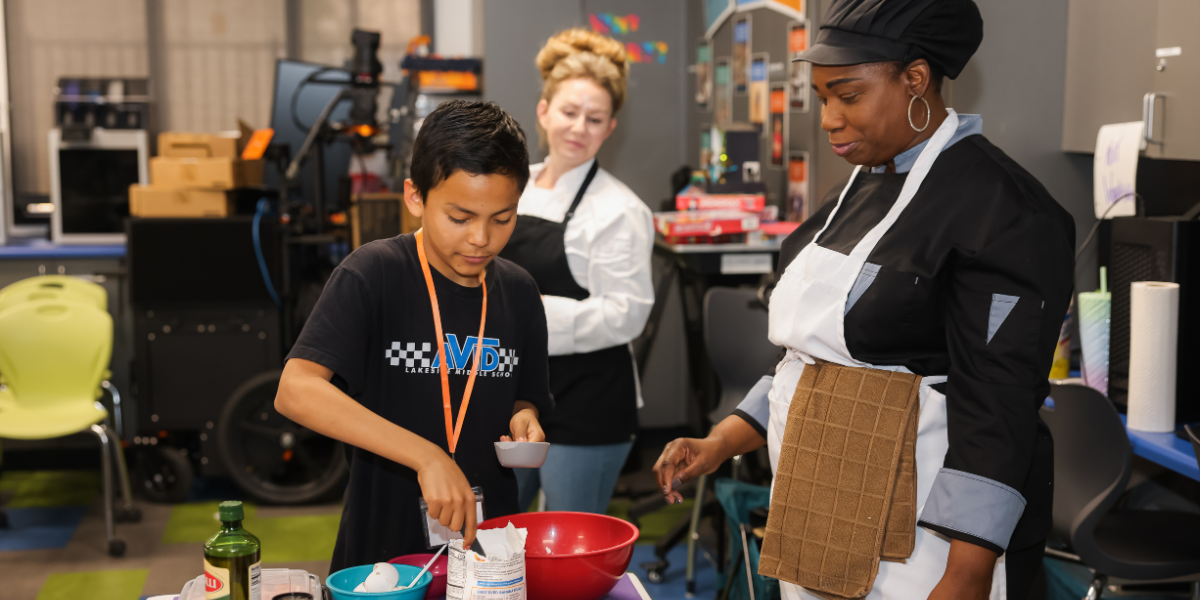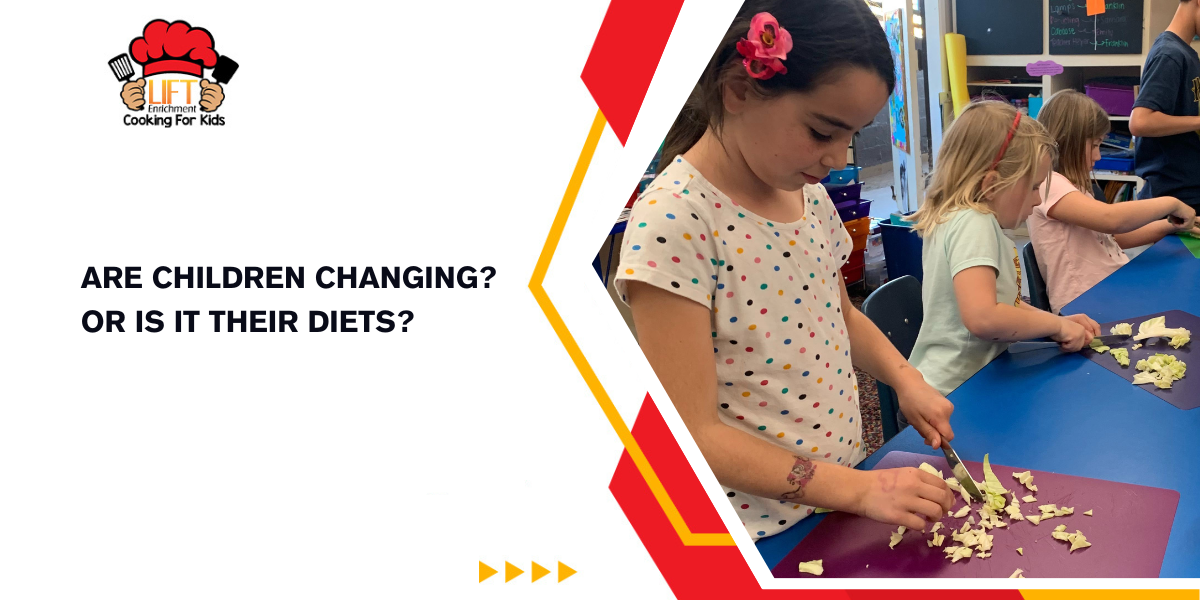Yesterday, someone asked us, “Do you think kids have changed?”
Our first answer?
No.
That said, speaking with teachers, something has changed. Even in the past two decades. Kids aren’t as social, they struggle to concentrate, aren’t as enthusiastic about learning, spend more time indoors, and give up more easily on problems.
So what’s going on?
It’s not the kids. It’s their environment: TV, smartphones, social media, video games… and above all?
Food.
What kids eat today often isn’t what it used to be.
These days, a lot of the foods kids love most: from cheesy snacks to ketchup to chicken nuggets—aren’t as simple as they seem. Many are made with highly processed ingredients and additives.
And while these foods are convenient and tasty, they don’t always give kids the nourishment their growing bodies and brains truly need.
Their brains and bodies aren’t getting the fuel they need to thrive.
So what happens when we flip the script and teach kids how to cook healthy food?

Here are three encouraging signs:
1) Food = Mood
A school in Wisconsin once replaced its processed cafeteria meals with fresh, low-sugar, home-style cooking. Almost overnight, students became calmer, more focused, and happier.
The truth is, food has a huge impact on how kids feel. Junk food causes sugar crashes and mood swings. But when kids learn how to cook real meals with real ingredients, they gain the tools to feel better and thrive.
2) Brain Food
The brain builds new skills by strengthening neural pathways, and those pathways are wrapped in a substance called myelin. Want to guess what myelin is made of?Omega-3s. The same nutrient is found in foods like leafy greens, nuts, pasture-raised eggs, and wild salmon. When kids cook with whole ingredients, they are not just making a dish; they are literally nourishing their ability to learn and grow.
3) Time Offline
Let’s face it—screens are everywhere. But they don’t spark creativity or build confidence the way real-world activities do. That’s why cooking is such a powerful activity. It encourages kids to enter the kitchen, where they can move, think, experiment, and connect with food, friends, and family.
And the best part? It’s fun.
We believe every child deserves access to healthy, hands-on culinary education.
If you’d like to learn more about our cooking program and how it can be grant-funded at your school, you can book a call with our team
Here’s what one school leader shared about their experience:
“I really enjoyed the Lift Enrichment program here at Abate this year! Chef Robin was wonderful to work with—she understood the students and taught them in a way they could really engage with. The recipes were easy to follow, and students loved trying new things. It was incredible to see how many kids wanted to join—we even had a waiting list! Thank you for bringing this type of club to our school.”
— Danielle Zona, Dean of Students, Harry F. Abate School
Previous Newsletters:
4 Big Ways Afterschool Programs Support Title 1 Students, Chef Teacher Story: Meet Chef Scotty, April In Review: Big Wins, Big Growth, The Six Key Benefits of Summer Programs for Kids and Communities
